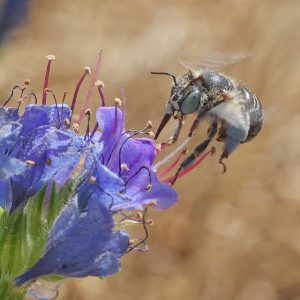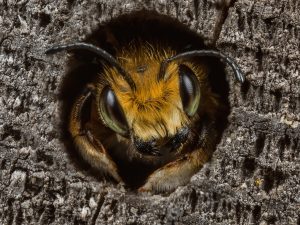THE LITTLE KING February 2025
By Kerry Williams: Communications Officer – Conservation
In this, our littlest month, I’d like to celebrate our littlest bird, the Goldcrest. Crowned with a yellow tuft, this aptly named species has an equally grand and, if you ask me, quite adorable, Latin name: Regulus regulus, or ‘little king’.
At a mere 9cm in length, the Goldcrest weighs a featherlight 5-6 grams; the same as a 20 pence piece. Despite their size, Goldcrests are a surprisingly easy spot. A fan of coniferous and mixed woodland, these birds can often be seen zipping about in pairs in your local gardens, parks and nature reserves, picking morsels like spiders and moth eggs from tree needles with tiny expert beaks. Their characteristic squeaking refrain, a ‘fiddle-di-di’ on loop, is so high pitched that not everyone can hear it. If you think you hear one, stop, wait, and listen, as you will most likely hear it again.
The only real confusion species is the similarly diminutive Firecrest, Regulus ignicapilla (meaning ‘fire-capped’). This rarer species, whilst sharing in the Goldcrest’s olive-green plumage, has notable black lines around the head and eye. Think of the Goldcrest as having not yet applied its eyeliner. Following the on-point naming convention, the Firecrest has an orange crest. This creates an additional challenge for identification, as the male Goldcrest does have a line of orange feathers hidden within their crest, which they show during territorial displays.
Goldcrests breed around April time, creating intricately curated nests of moss, lichen and spider webs high in the treetops. Overall, Goldcrest numbers are stable, with a 600,000 strong breeding population throughout the UK. These are joined by a Scandinavian migratory population for the winter, boosting your chances of seeing one during the colder months.
Despite their success, Goldcrests are at risk from several threats. Their size means they are vulnerable in the cold weather, so the more erratic weather patterns we experience due to climate change, including unexpected cold snaps and storms, are a danger to these birds. As with all UK species, habitat loss is a problem, and in the Goldcrest’s case this includes deforestation.
If you are walking in woodland and catch a glance of a little ball of energy in the treetops, try to spot them with binoculars to be rewarded with a millisecond’s glance of their worried-looking little face, before they’re off again, much to do. Heavy is the head that wears the crown.


